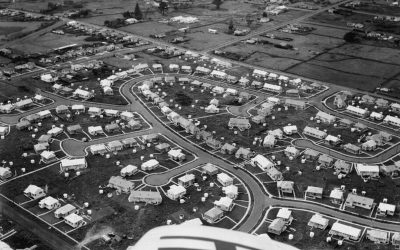The other day, as I drove to my exercise class (yes, yes, I know there’s a contradiction there), people on the radio were telling me to take the TTC. There was a smog alert, and I was contributing to the problem. But it’s next to impossible to get to my class by bus, so I drove.
“Hah!” said my instructor, the Pilates queen. “You know what TTC means? Take The Car.” She’s no fan of Toronto’s public transit. That’s too bad because, according to the politicians and the urban planners, public transit is the answer to all our woes. Everyone knows cars are responsible for everything from gridlock to pollution and obesity. Pry people from their cars, and the world will be a better place.
Unfortunately, most people are refusing to co-operate. In 1988, TTC ridership was 463 million, the second largest in North America. By last year, despite the Greater Toronto Area’s explosive growth, ridership had shrunk to 410 million.
Transit advocates blame higher fares and service cutbacks for this decline. If only we invest more in improving public transit, more people will use it. To a limited extent, this may be true. But transit advocates ignore the overwhelming evidence from around the world: People still prefer their cars.
“It may not be the faster way, but public transit remains the better way,” The Toronto Star argued this week. New statistics on commuting times reveal what everyone already knows: Public transit is a whole lot slower than driving. People who commute to work by car spend an average of 59 minutes on the road each day (round trip). Transit riders spend 106 minutes. The Star says the answer is massive new investments from all levels of government so public transit can “better compete against the unwholesome lure of the automobile.” My own trip to work takes less than 20 minutes by car, but an hour by TTC, much of it standing up. The unwholesome lure of the automobile is darned hard to resist.
Southern Ontario is the third-fastest growing region in North America — in the next 25 years, the population is projected to grow by a staggering four million people. So what’s the plan for constructing new road systems and highways? Um, there isn’t one. The province plans to re-engineer people’s behaviour so they’ll take public transit.
Last month, Ontario unveiled a new long-range plan to put an end to car-dependent urban sprawl. Higher-density developments will reduce the sprawl, promote more “compact living” and build “complete communities,” where people can live, work, shop and play without needing a car. Not only will this plan cut down on smog and gridlock, promises the government, but it will enhance people’s sense of community (because they’ll be closer together, I guess) as well as improve public health.
“Studies tell us that people living in car-dependent communities miss out on natural opportunities for physical activity,” declared the minister of infrastructure. “Moreover, they are prone to health problems, such as obesity and heart disease. Our children, in particular, are at much greater risk.” In other words, make the little buggers walk.
As for Toronto, everyone agrees it should become more like Paris, where people live in higher-density apartment buildings instead of single-family houses, and walk everywhere to do their shopping. There’s just one problem: Most Parisians don’t live in central Paris any more. Three-quarters of them live in the suburbs, where they can find single-family houses, get around by — mon Dieu! — car and shop at — quelle horreur! — supermarchés and big-box stores.
The idea that people will use public transit to get to work ignores the fact that most people don’t want to live near their work. And because people are so mobile, they no longer have to. On top of that, people use their cars for much more than commuting. According to one study, 20 per cent of all trips by auto are for work, 20 per cent for shopping, and 60 per cent for things that are “social.” The idea that public transit can replace the car in people’s busy lives is a fantasy.
As for lower-income people — supposedly the main beneficiaries of public transit — they have an alternative, too. It’s called used cars.
And yet, nowhere in all the hype about the province’s new growth plan is there a mention of the words “roads” or “highways.” This omission reminds me of the Duke of Wellington’s comment about railways, whose construction he opposed because they “only encourage the common people to move about needlessly.”
Public transit systems are certainly no bargain. “Transit subsidies are hugely greater than any subsidies to the automobile,” says Peter Gordon, a California professor of planning and economics. And some people say the cleaner, greener virtues of public transit are vastly overstated. “Most new autos generate little or no more pollution per passenger vehicle mile than the average bus,” says Robert Bruegmann, author of Sprawl: A Compact History. He argues it would require a massive increase in the use of public transportation and improvements in transit vehicles to bring about any meaningful reduction in energy use or pollution.
Mr. Bruegmann’s comments about urban planners’ war against sprawl are an apt description of the mindset behind Ontario’s new master plan. “Very few people believe that they themselves live in sprawl. Sprawl is where other people live, particularly people with less taste and good sense than themselves. Much anti-sprawl activism is based on a desire to reform these other people’s lives.”
If we really wanted to tackle smog and congestion, we wouldn’t be fantasizing about massive new investments in public transit. We’d be investing in transportation infrastructure, less polluting fuels, more intelligent roads and vehicles with sensors to control traffic flows, peak-time user fees and more flexible forms of public and private transport, such as group taxis. But you won’t find the planners talking about these things because, to do so, they would have to concede defeat to the unwholesome lure of the automobile — to say nothing of the overwhelming preference of the public. And that would be very, very wicked.
mwente@globeandmail.com


